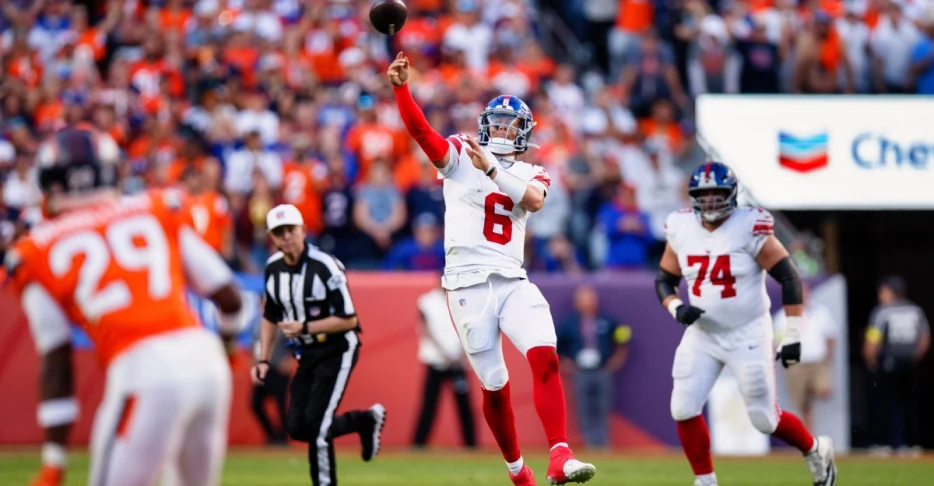
 Big Blue View
Big Blue View
Big Blue View readers were understandably upset this past Monday when I published the post discussing the New York Giants’ Pro Football Focus grades for their 33-32 loss to Denver the previous day. The primary subject of their ire was PFF’s ranking of Giants’ offensive players’ performances, in particular the lowest-ranked player on the list:
In fact, PFF has been mostly cool on rookie quarterback Jaxson Dart throughout his four starts — other than the Philadelphia game:
This contrasts mightily with Giants fans’ view of Dart. Fans see Dart as the second coming of…Patrick Mahomes? Josh Allen? Probably not, but as something unlike anyone the Giants have had at that position since maybe Fran Tarkenton. Dart has injected excitement into a season that was starting to look all too much like recent seasons other than 2022. And it hasn’t just been the fans. The Eagles’ Vic Fangio was singing his praises to the press, though some of that is undoubtedly blowing smoke so as not to rile up your coming opponent. Dart did, though, slice up Fangio’s defense the week before last. Perhaps the most telling thing is that the broadcast team for this Sunday’s rematch is Kevin Burkhardt and Tom Brady, Fox’s lead team. Even Nik Bonitto, one of the participants in the online war of words before Sunday’s Giants-Broncos game, told Kay Adams that he was impressed with Dart:
So why isn’t PFF impressed? Do they have it in for Dart? Do they not know what they’re doing? (A common sentiment in BBV comments and on X.) Or something else?
The answer is that PFF measures certain things, and it doesn’t measure others. Specifically, PFF measures primarily the physical performance of a player. They tell us in their articles, and in their videos, how they do that. It starts with giving a grade to every player on every play, ranging from -2 to +2. The grade is relative to what is expected of a player on that specific type of play:
Here’s another, more recent article, written by one of their graders. As he points out, if a QB completes a 3-yard slant, he gets a zero grade. He did what was expected, nothing more, nothing less. Departures from zero are reserved for doing something beyond expectations, and especially in important situations. Their example above for the quintessential +2 grade, the highest they can give on a play, is Eli Manning’s Super Bowl throw to Mario Manningham. That play had everything: Beautiful throw, way downfield, placed right in between two defenders where only Manningham could catch it, but not leading him out of bounds…and the key play in winning that Super Bowl. According to the article, even the league-leading QBs throw passes that are positively graded only 25-30% of the time, and even that number doesn’t account for whether the positive grade is +0.5 or +2.0. The same applies in reverse to poorly thrown, negatively graded plays.
How PFF combines all those grades on individual plays into a...